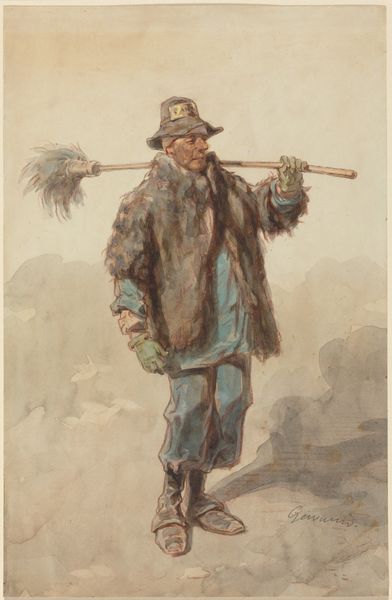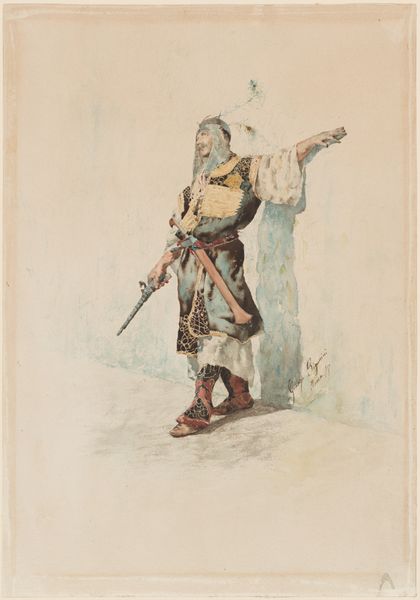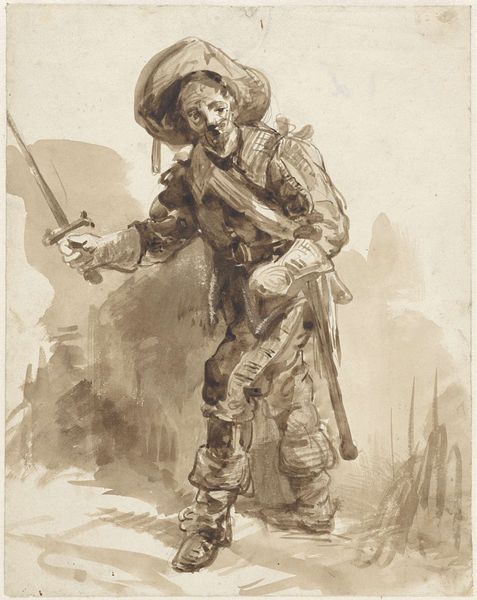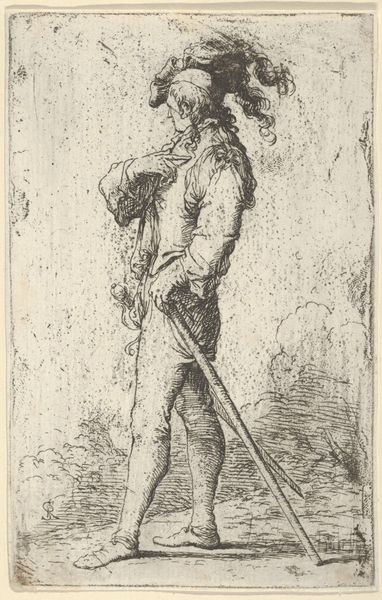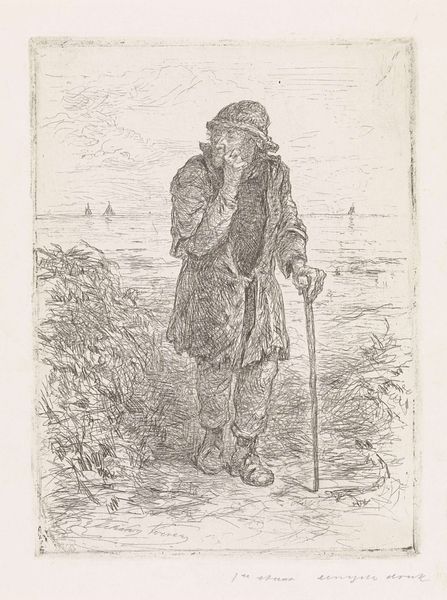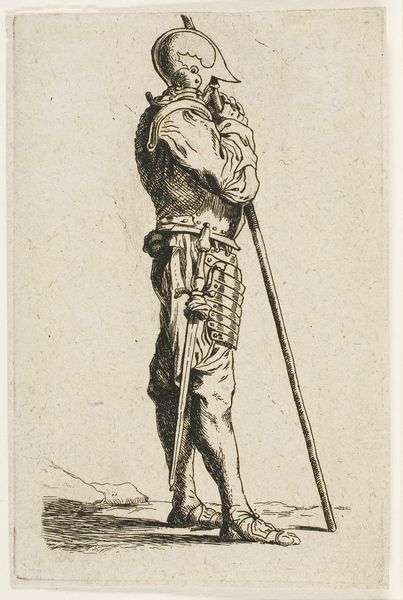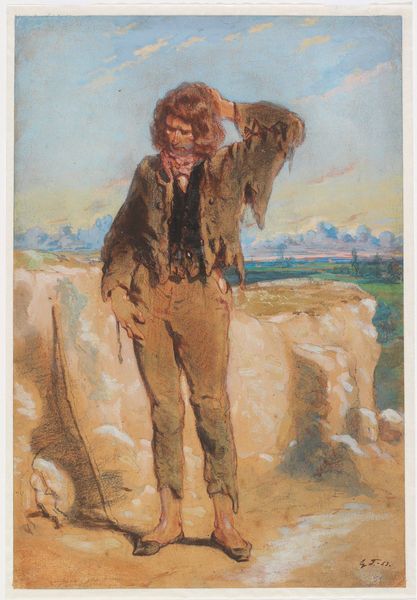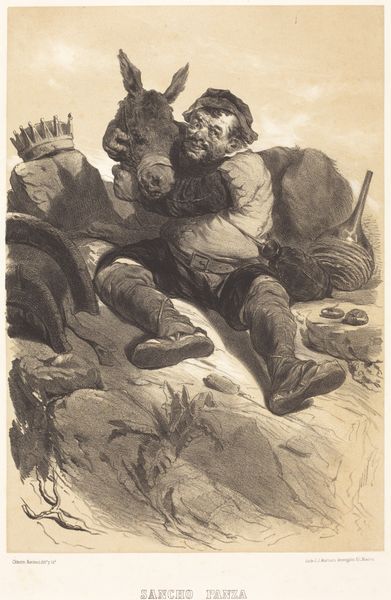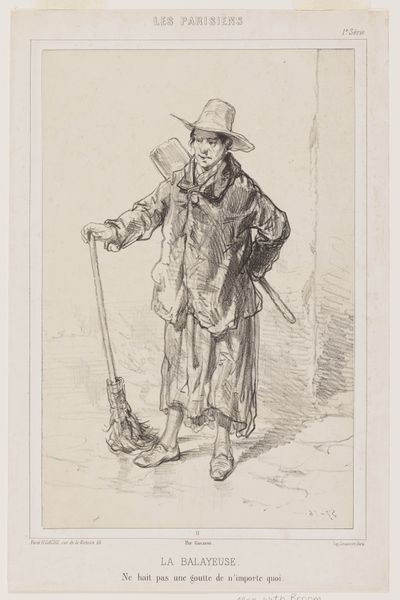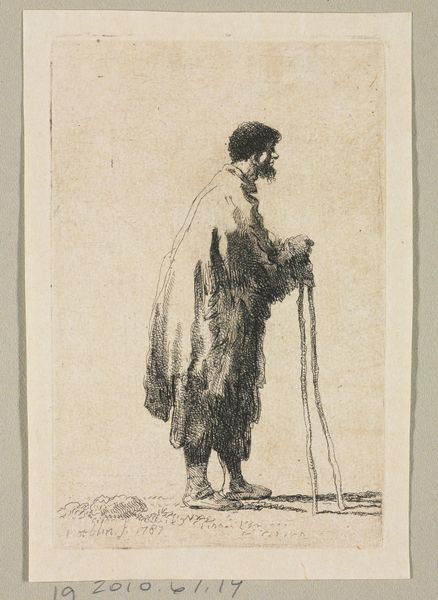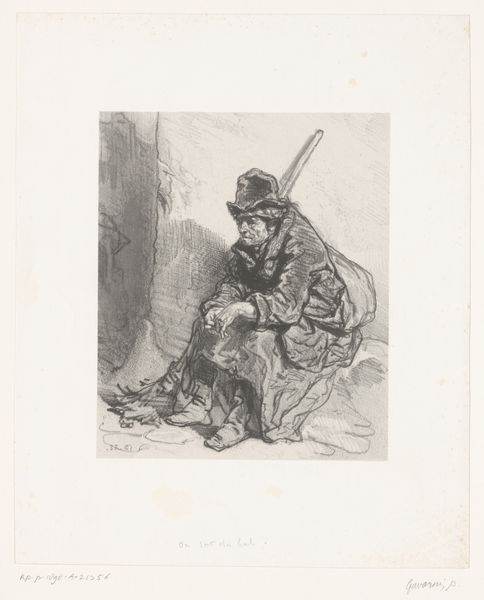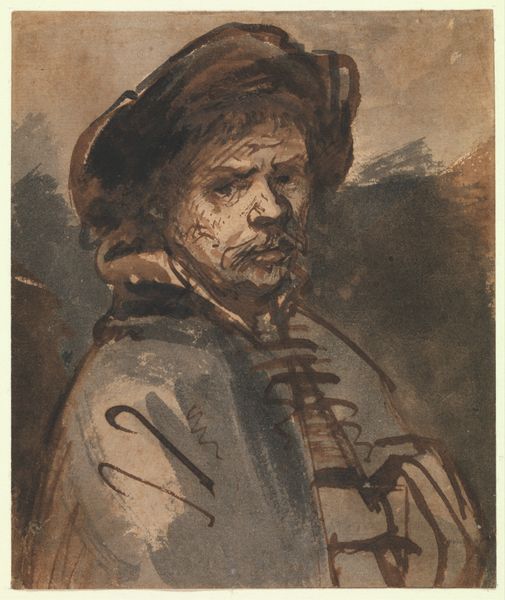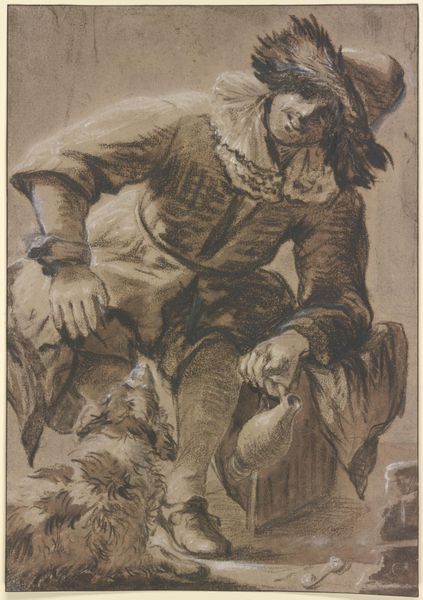
drawing, coloured-pencil, watercolor
#
portrait
#
drawing
#
coloured-pencil
#
watercolor
#
coloured pencil
#
romanticism
#
genre-painting
#
watercolor
Dimensions: overall: 25.7 x 18.4 cm (10 1/8 x 7 1/4 in.)
Copyright: National Gallery of Art: CC0 1.0
Editor: This is "English Beggar" by Paul Gavarni. It seems to be a drawing made with coloured pencils and watercolour. The figure is central and seems to be leaning on a walking stick. What do you see in this piece beyond the surface, in terms of the social or political context? Curator: It's fascinating to consider this piece through a socio-political lens, isn't it? Gavarni made this within a rapidly changing social landscape, marked by industrialization and urbanization that displaced many, leading to visible poverty. He seems to highlight the intersectional oppression this man may have faced, touching on class, disability and perhaps even national identity considering the title "English Beggar" might hint at prejudices related to immigration and foreignness. What do you make of his gaze? Editor: His gaze does seem to be somewhat confrontational but weary at the same time. I think the fact that the artist titled it specifically "English Beggar" really does stand out. The man’s clothes also look worn and patched. What kind of commentary do you think the artist was trying to make? Curator: Well, considering the rise of social realism in art during that period, Gavarni seems to invite a sense of empathy towards the subject. His rendering, avoiding idealization and presenting him "as is", served as a critique of social inequalities. By portraying marginalized people, artists like Gavarni could challenge societal norms. Editor: That makes sense. I hadn't thought about it in terms of social critique, more just as a portrayal of an individual. I wonder if the use of watercolour makes this type of depiction more human somehow. Curator: Precisely. Watercolor has an immediacy, a fragility, which mirrors the precariousness of the beggar's existence, wouldn’t you agree? So the medium, combined with his direct stare really places the artwork within those sociopolitical discussions of class and identity. Editor: Yes, I understand better now how his artistic choices and historical context created a relevant piece for that time and, really, for ours. It is striking how relevant the theme of marginalization and social class are in current conversations. Curator: Agreed. I’m glad we could unpack those layers! It goes beyond just artistic skill to challenge our understanding and perception.
Comments
No comments
Be the first to comment and join the conversation on the ultimate creative platform.
